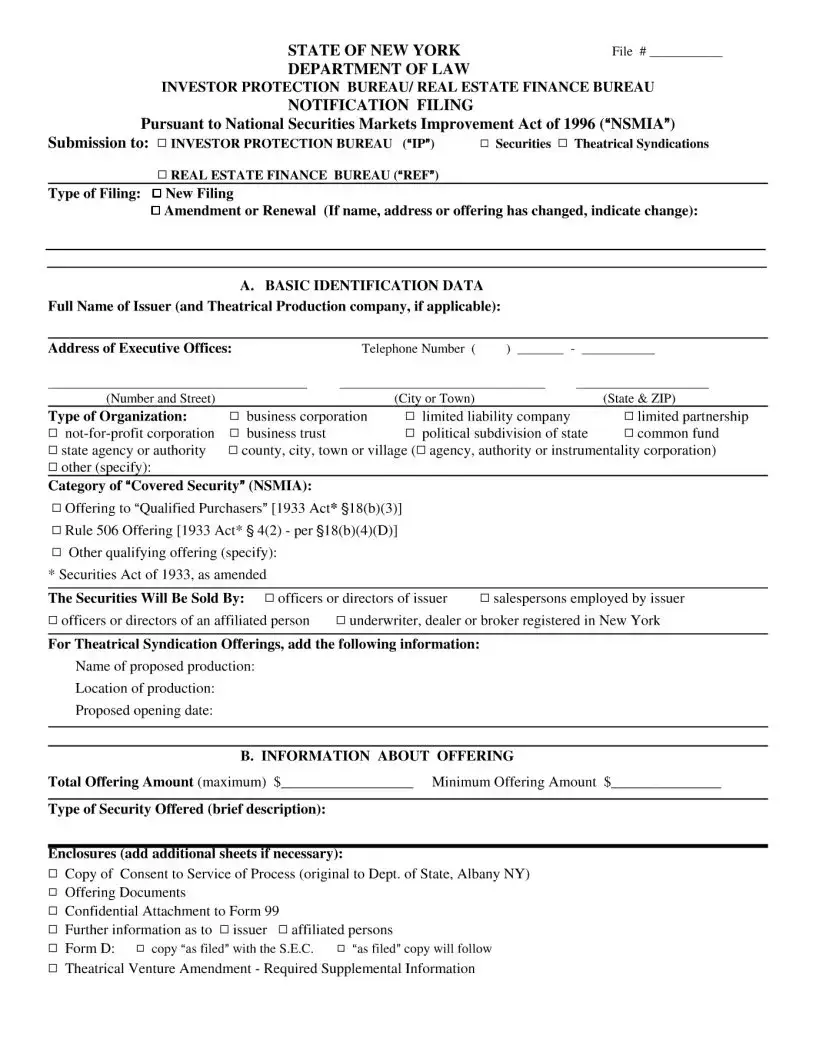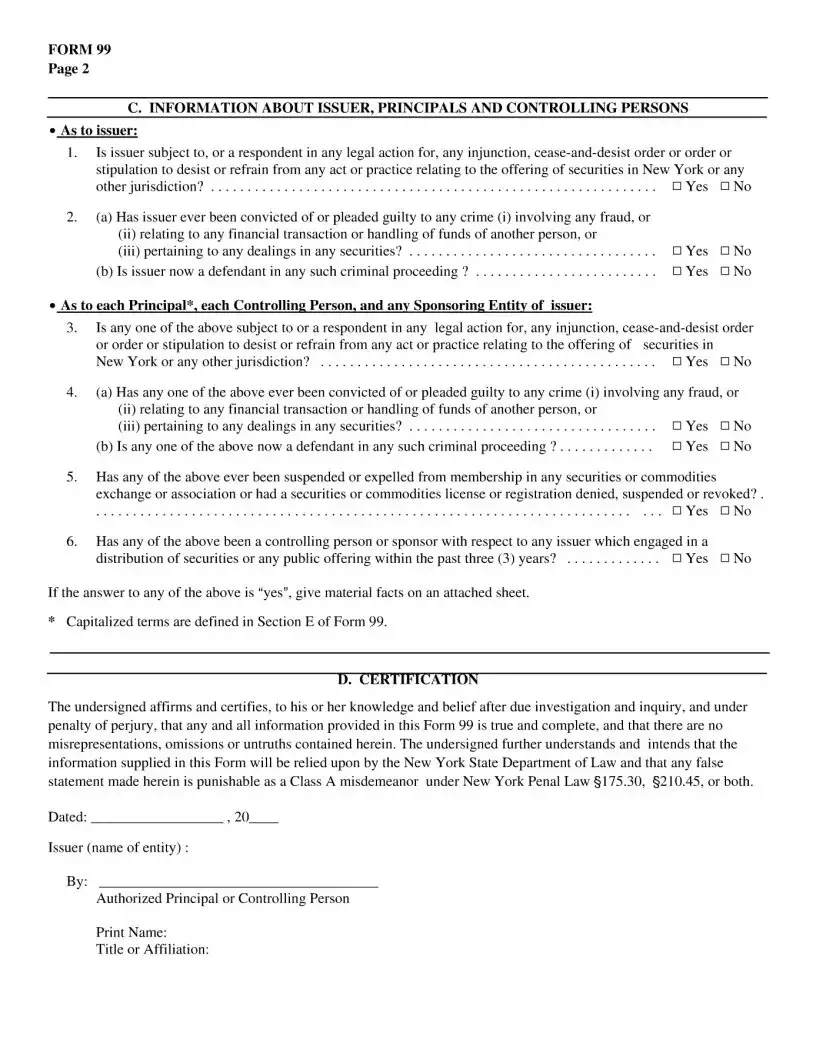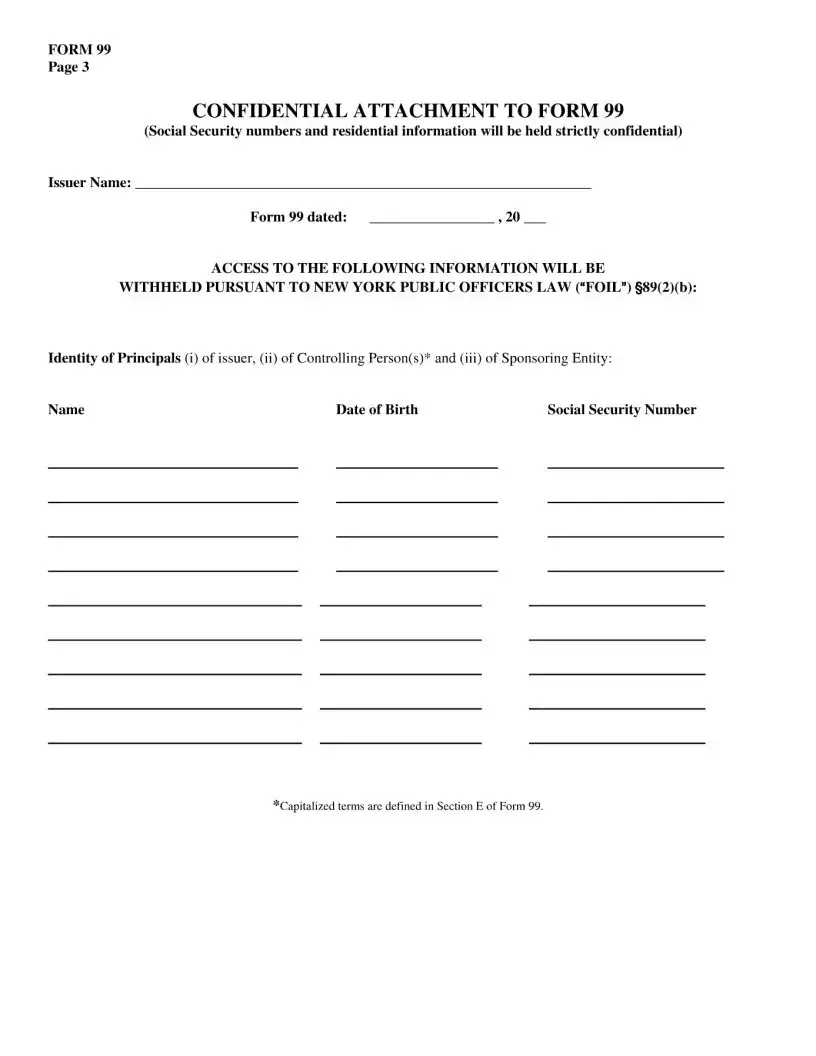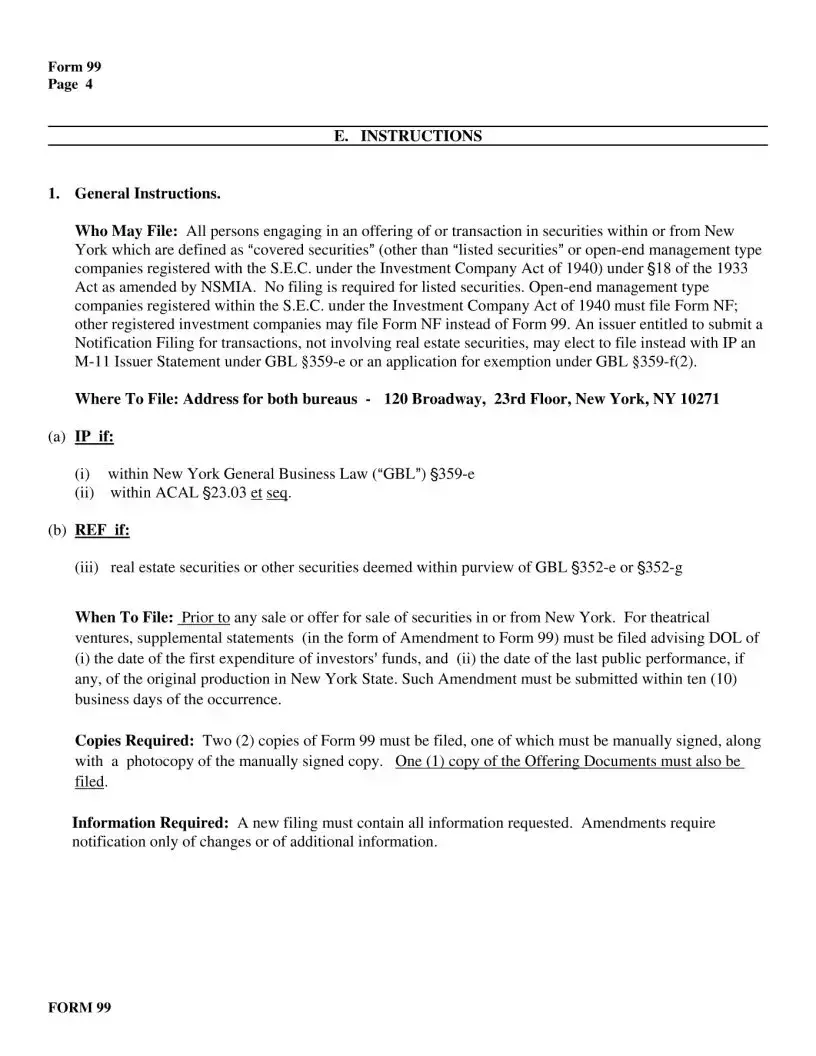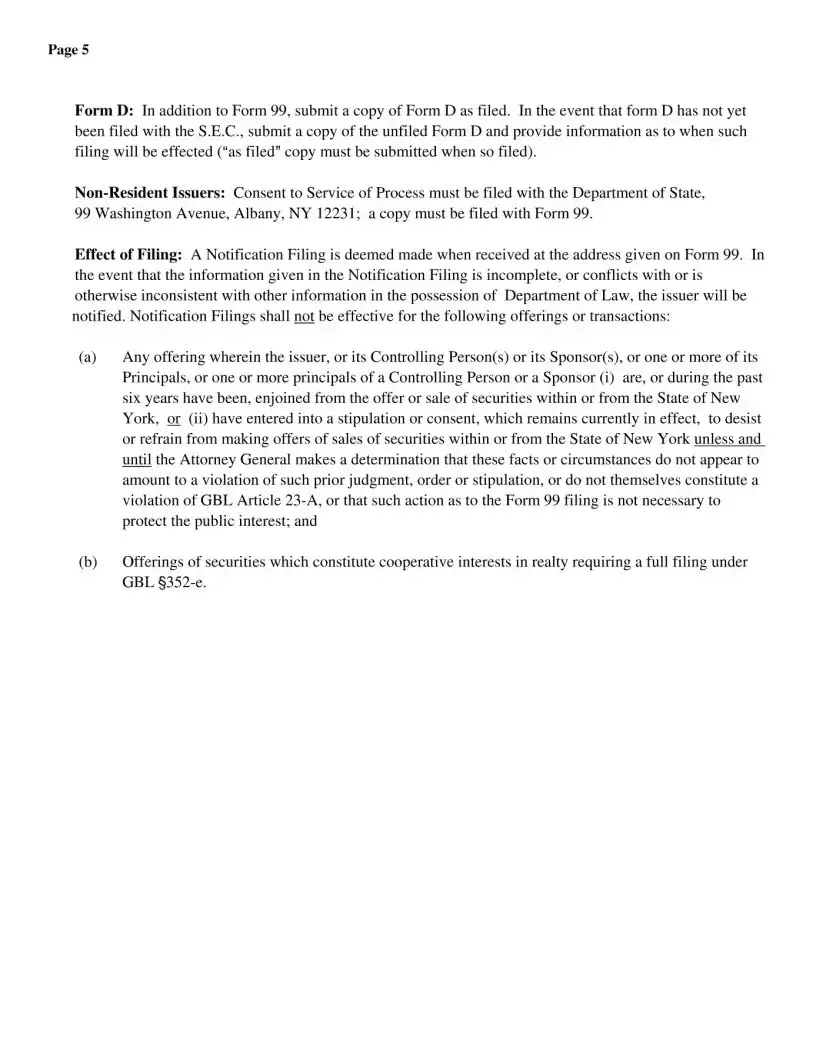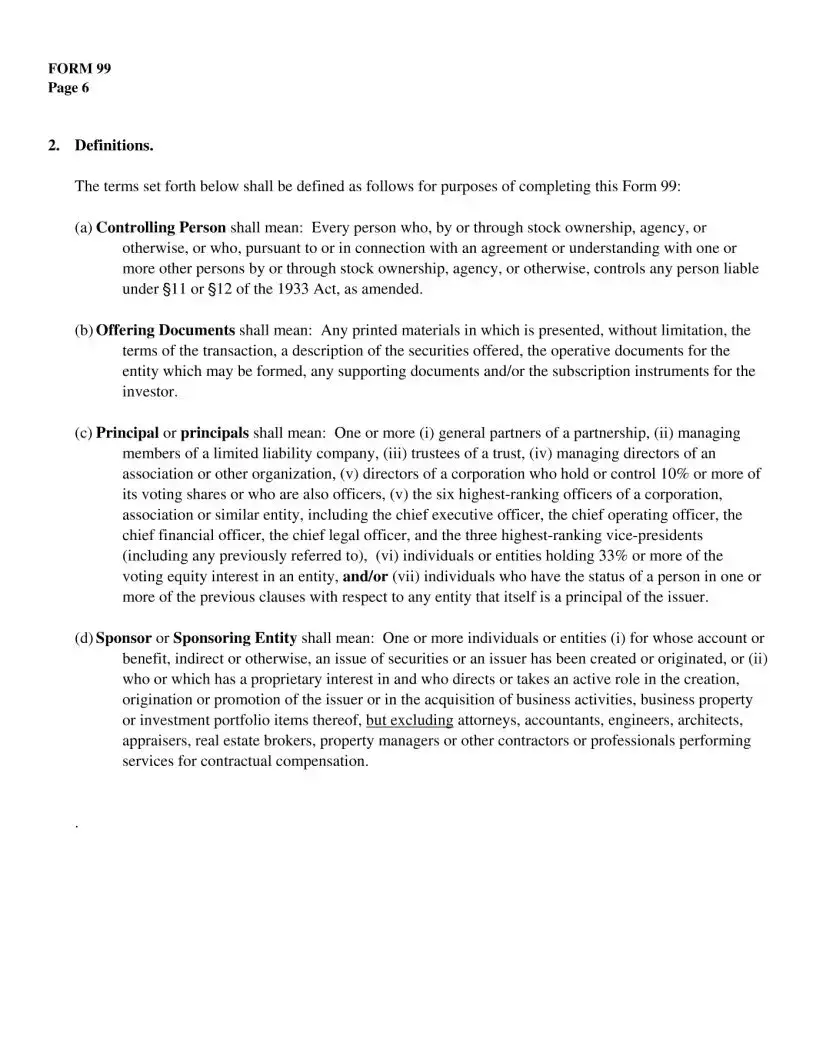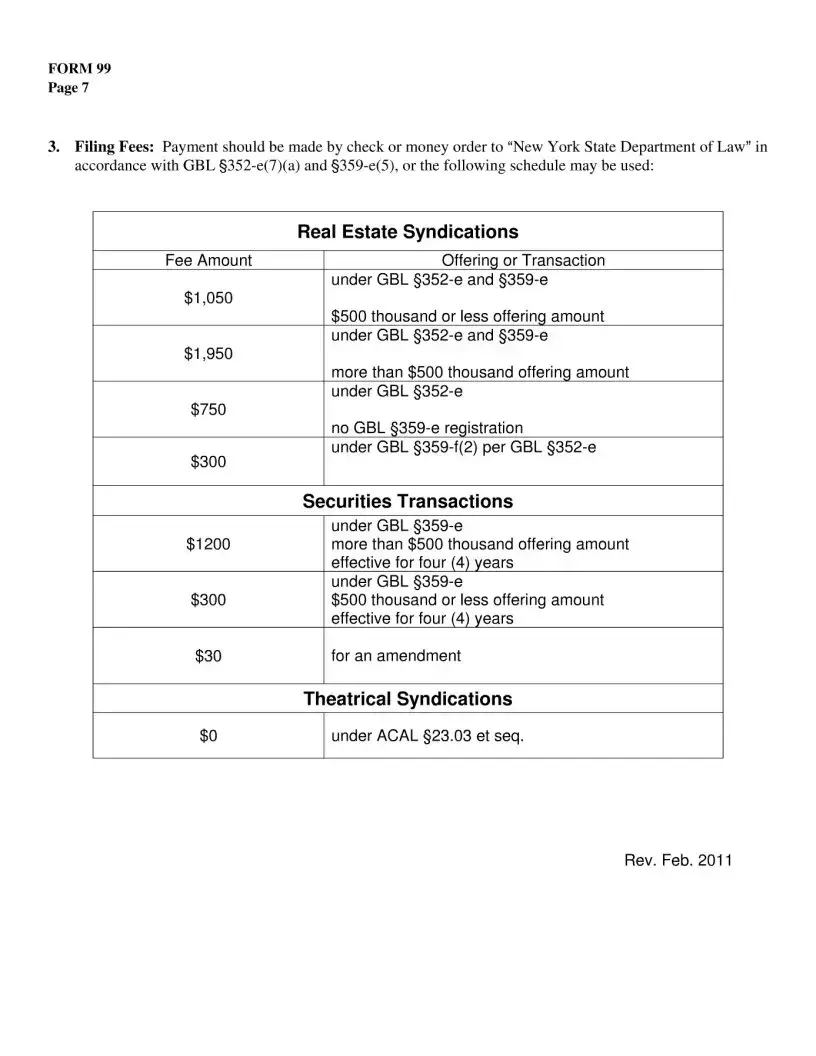The 99 NY form is a crucial document for those involved in the issuance of securities within New York, particularly under the regulations set forth by the National Securities Markets Improvement Act of 1996 (NSMIA). This form serves as a notification filing for various types of offerings, including theatrical syndications and other securities. It requires issuers to provide essential identification data, such as the name and address of the organization, the type of organization, and the category of the security being offered. Furthermore, it addresses the specifics of the offering, including the total offering amount and the type of security being sold. The form also mandates disclosures about the issuer and its principals, ensuring that any legal issues or past convictions are transparently reported. This level of scrutiny helps protect investors and maintain the integrity of the financial markets. Additionally, the form includes a certification section where the issuer affirms the accuracy of the information provided, underscoring the importance of honesty in these filings. By requiring detailed information and compliance, the 99 NY form plays a vital role in investor protection and the regulation of securities offerings in New York.

